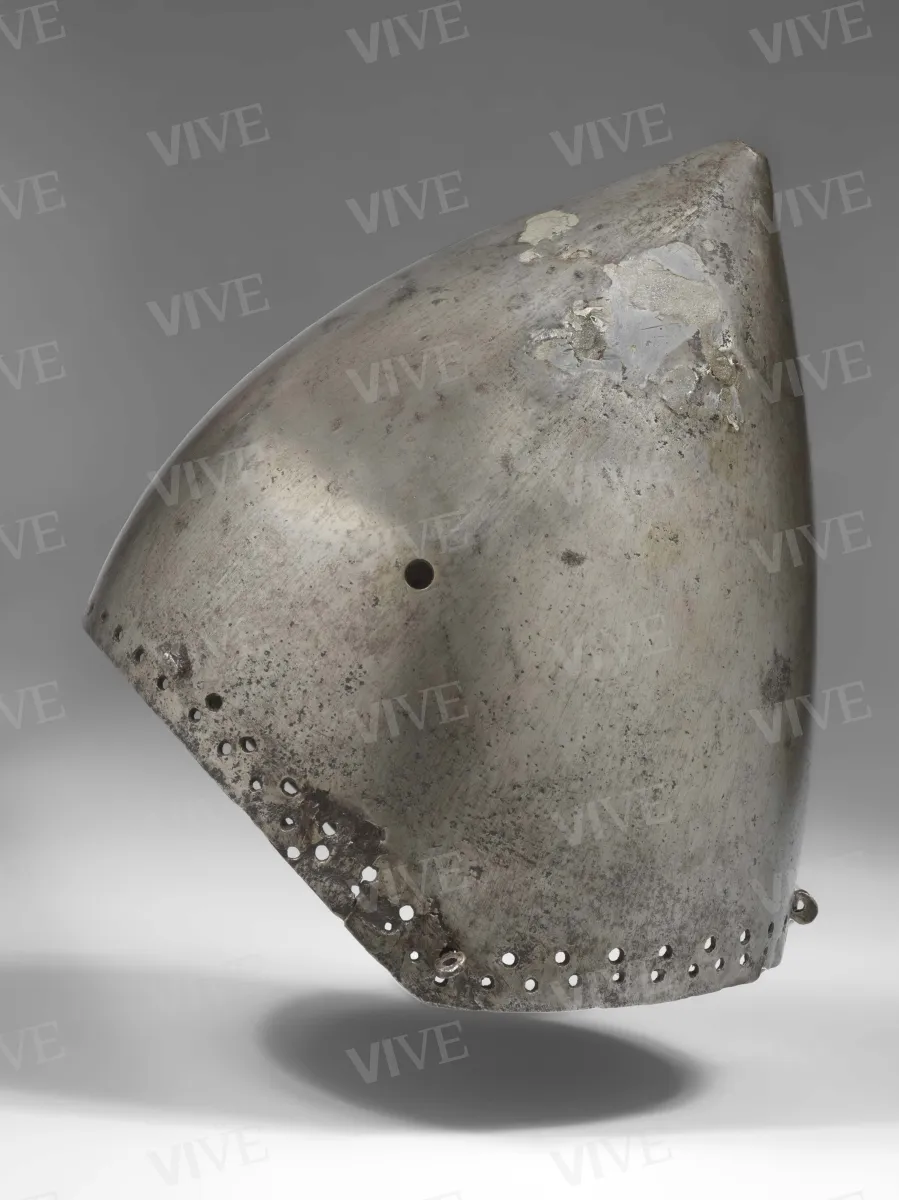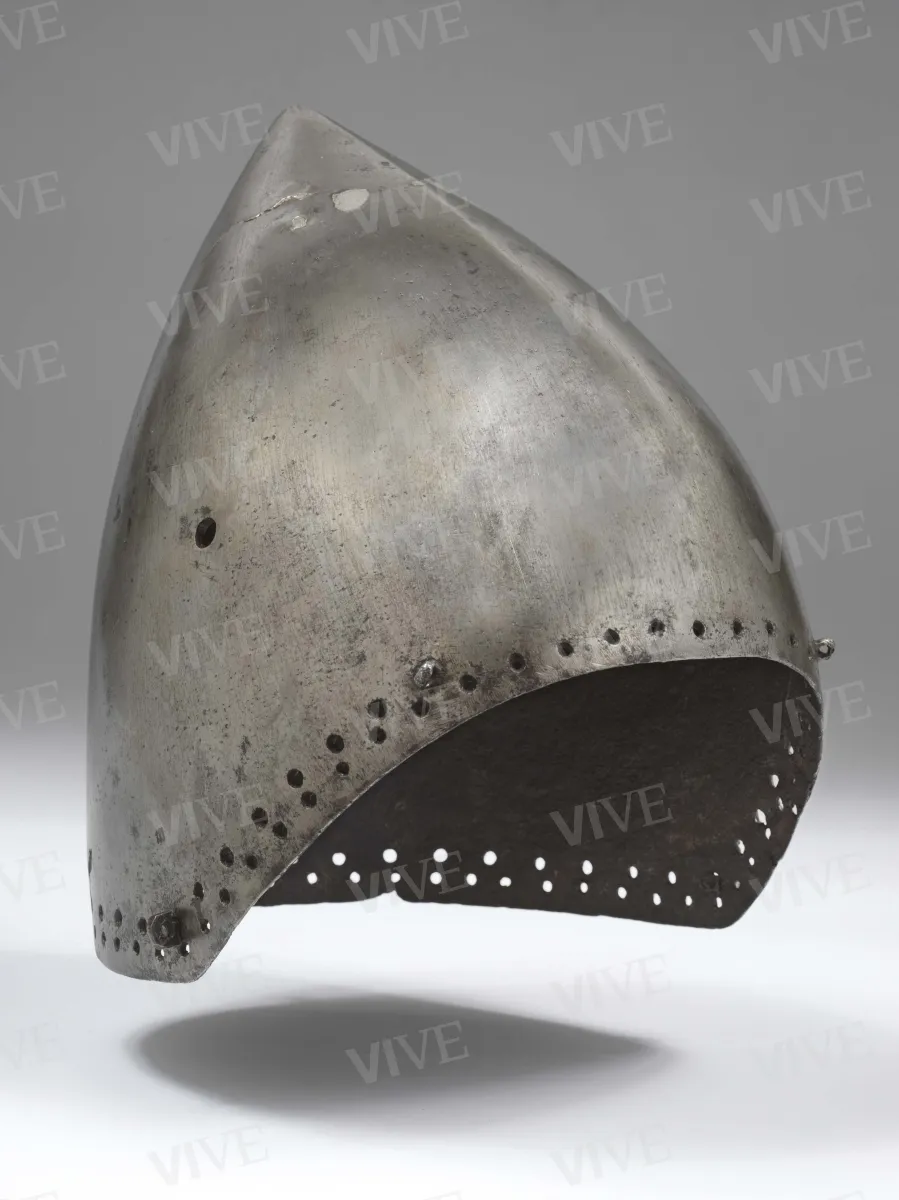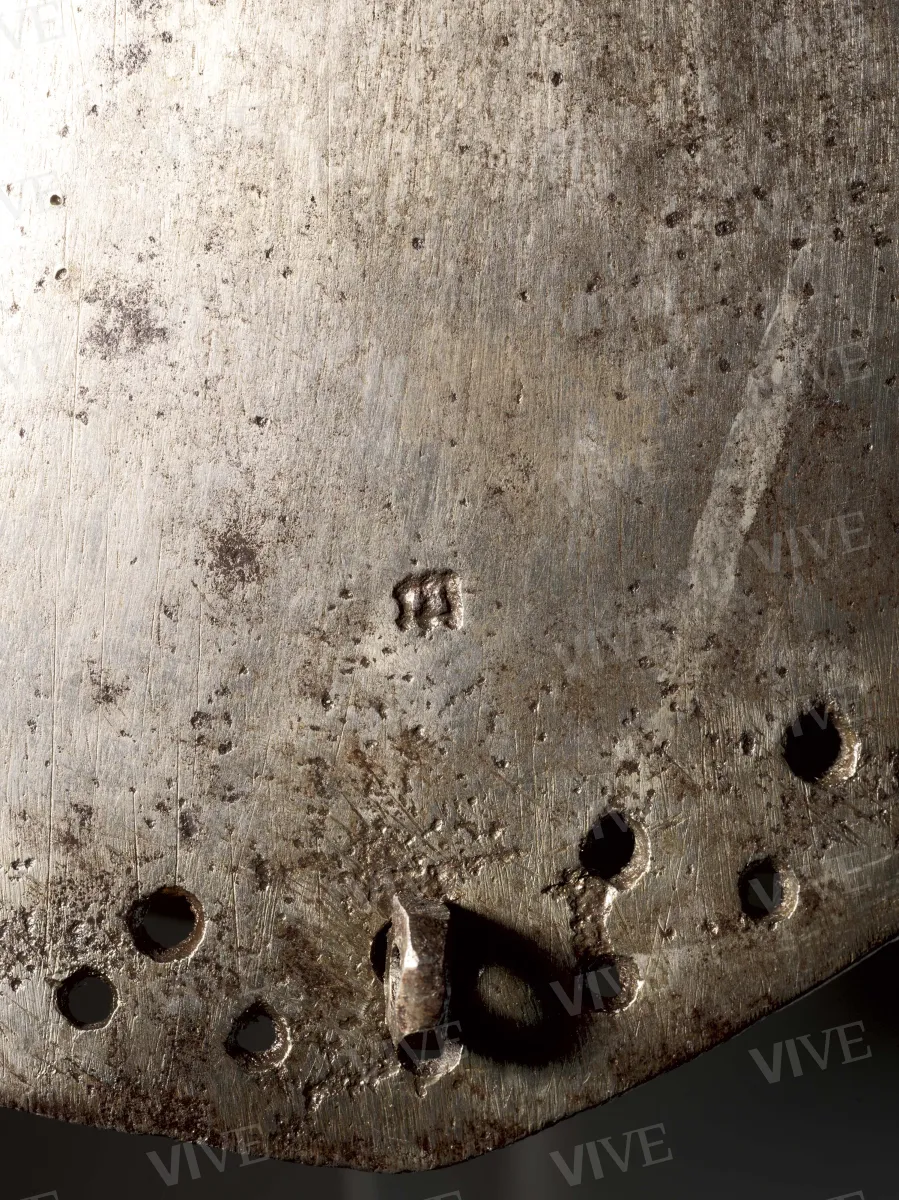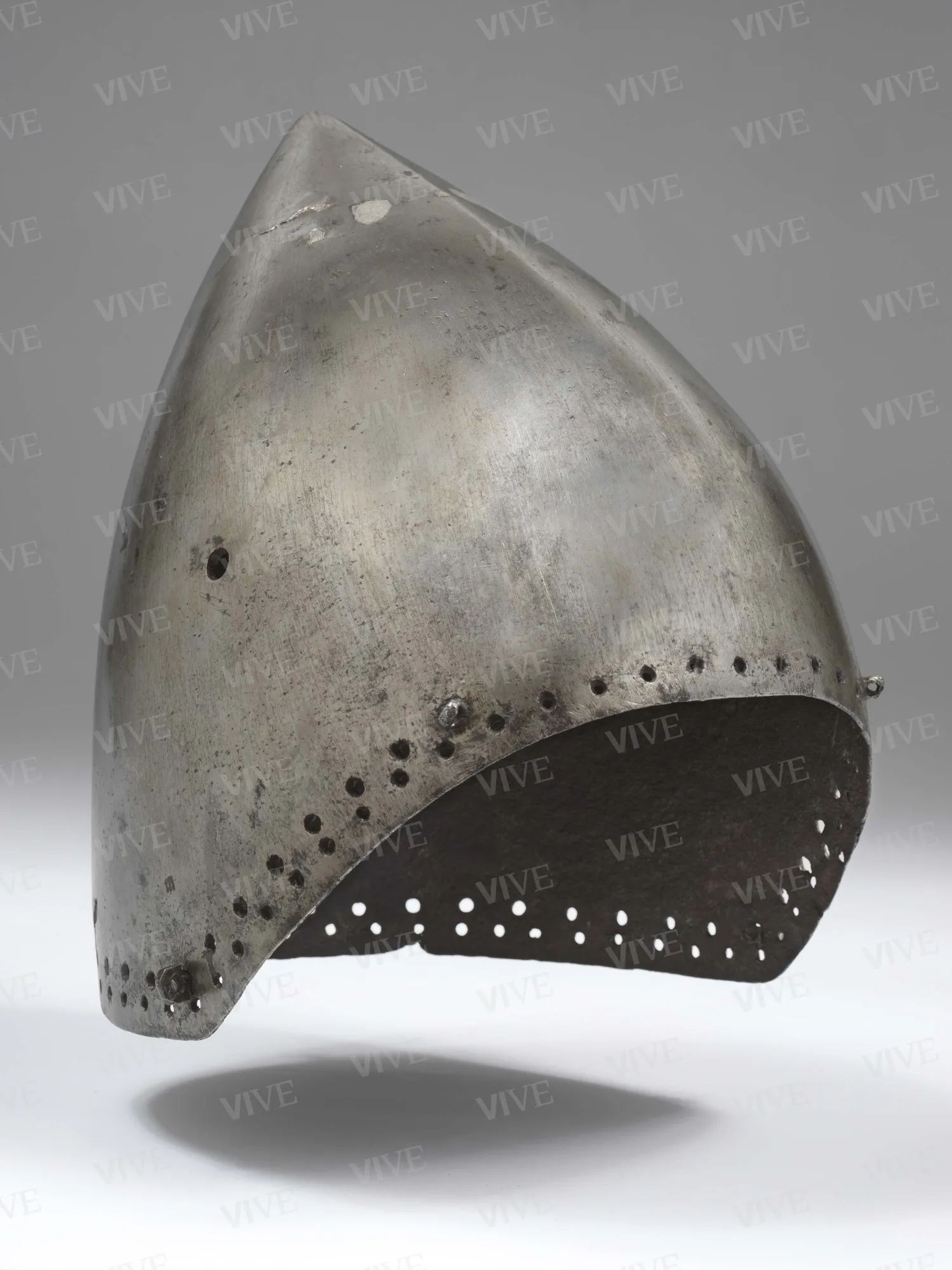Bascinet with visor
Western European production Early-15th century
The ogival, blunt-tipped skullcap is slightly ribbed and has two holes at the sides for visor pins. The edge of the skullcap has a double row of holes for the liner, which is reduced to a single row at the face guard. The vervelles are arranged on the three sides of the lower margin and on either side of the front opening. On the lower margin, on the side, is a Gothic “M.” Over time the piece was modified to allow for a new visor.
The ogival, blunt-tipped skullcap is slightly ribbed and has two holes at the sides for visor pins. The edge of the skullcap has a double row of holes for the liner, which is reduced to a single row at the face guard. The vervelles are arranged on the three sides of the lower margin and on either side of the front opening. On the lower margin, on the side, is a Gothic “M.” Over time the piece was modified to allow for a new visor.
Details of work
Catalog entry
The distinctly conical, ogival, blunt-tipped skullcap is slightly ribbed and has two holes on the sides for the visor pins (the visor itself is missing, as is the aventail). The face guard is short. The shape is rather archaic, its symmetry reminiscent of barbutes (Scalini 2018). The edge of the skullcap has a double row of holes for the liner, which is reduced to a single row at the face guard. The vervelles, some of which are extant, are arranged along three sides of the lower margin and on either side of the front opening. On the lower margin, on the side, is a Gothic “M.” Over the course of time the piece was modified to allow for the placement of a new visor that was presumably hinged (it is, however, difficult to imagine this type of visor based on the shape of this skullcap) and rotated on the pins placed along the bands, now visible in an unusual position (Scalini 2014, 43–54; Scalini 2018). Scalini (2018) compares this specimen to the older bascinet No. 1 from Piancastagnaio, where we note a similar recycling of the skullcap (a practice that was already widely attested to in the documents of the Datini archives in Prato) that involved “reforging” and “retraversing” the bascinet (Scalini 2018).
Di Carpegna (1969 and 1977) points out the similarity of this piece to a bascinet held at the Museo Comunale at San Gimignano. Terenzi (196) dates the bascinet to around 1380–1390, while di Carpegna (1969) considers about 1400 to be more likely.
Chiara Paniccia
Entry published on 12 February 2025
State of conservation
Not very good. The specimen is oxidized and severely damaged by rust and blows. Restoration work prior to specimen’s purchase by the Italian state resulted in damage due to excessive cleaning and application of soft metal, probably lead, in an attempt to repair surface breaks.
Restorations and analyses
Cleaning prior to purchase by the Italian state (1959) that somewhat ruined the iron surface.
Inscriptions
On the lower right side is the letter “M” in Gothic script (5x4 mm).
Provenance
Collezione Odescalchi (artifact acquired from antique dealer Bacherau in Paris in 1901).
Exhibition history
Poppi, Castello dei conti Guidi, Mostra di armi antiche. Sec. XIV-XV, 1967;
Rome, Palazzo Venezia, Antiche armi dal sec. IX al XVIII, già Collezione Odescalchi, May–July 1969;
Rome, Museo nazionale del Palazzo Venezia, L’elmo lucente al XV al XIX secolo nella Collezione Odesalchi, December 16 2003–January 16 2004;
Rome, Castel Sant’Angelo; Palazzo Venezia, Armi e potere nell’Europa del Rinascimento, July 26–November 11 2018.
Sources and documents
di Carpegna Nolfo, Scheda OA n. 30927, Soprintendenza per i beni artistici e storici di Roma, October 29 1977.
References
Terenzi Marcello (a cura di), Mostra di armi antiche. Sec. XIV-XV, catalogo della mostra (Poppi, Castello dei conti Guidi, 1967), Firenze 1967, n. 26;
di Carpegna Nolfo (a cura di), Antiche armi dal sec. IX al XVIII già Collezione Odescalchi, catalogo della mostra (Roma, Palazzo Venezia, maggio-luglio 1969), Roma 1969, p. 8;
Barberini, 1. Bacinetto, in Barberini Maria Giulia (a cura di), L'elmo lucente al XV al XIX secolo nella Collezione Odesalchi, catalogo della mostra (Roma, Museo nazionale del Palazzo Venezia, 16 dicembre 2003-16 gennaio 2004), Roma 2004, p. 5;
Scalini Mario, From Helmets to Buckets. Bascinets and Hand Artillery of the Aldobrandesco Fortress of Piancastagnaio, in La Rocca Donald J. (a cura di), The Armourer's Art. Essays in Honour of Stuart Pyhrr, Woonsocket, Rhode Island 2014, pp. 43-54;
Scalini, I.11 Bacinetto a visiera, in Scalini Mario (a cura di), Armi e potere nell'Europa del Rinascimento, catalogo della mostra (Roma, Castel Sant'Angelo; Palazzo Venezia, 26 luglio-11 novembre 2018), Cinisello Balsamo 2018, p. 57.
















